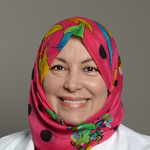
Nov. 27, 2018
Application of Deep Learning in Predicting Phenotypes
Genomic selection (GS) can use single-nucleotide polymorphism (SNPs) markers to predict breeding values (BV) for enhancing quantitative traits in breeding populations. GS has been proved to increase breeding efficiency in both plant and animal breeding. However, existing statistical and machine-learning methods require imputation to missing values in genotypes, which leads to poor generalization and computation inefficiency. Here, we propose a deep-learning model using convolutional neural networks (CNN) to predict the Genomic Estimated Breeding Value (GEBV) and also to investigate contributions of genomic SNPs to GEBV using a saliency map approach.Comparing with traditional statistical models including rr-BLUP, Bayesian ridge regression, Bayesian…

Sep. 28, 2018
Promoting Healthy Coping in seniors 72 years or older with Type 2 Diabetes: A feasibility study of a mobile diabetes self-management and support application on functionality, readability, and usability
One out of four Americans older than 65 years old has diabetes.Type 2 diabetes accounts for about 90% to 95% of all diagnosed cases of diabetes. Mobile health technology provides possible solutions for seniors with type 2 diabetes to manage their daily lives. However, our preliminary research shows that only 10% of diabetes apps provided features related to Healthy Coping, which is one principle from the American Association of Diabetes Educators Self-Care Behaviors™, enables people with diabetes to find healthy ways to cope with stress. To alleviate this problem, we have designed a prototype of Healthy Coping mobile…

July 2, 2018
Informatics framework for the identification of diagnostic discrepancies and errors
Diagnostic “grey zones” is a term used in pathology, the study of diseases, to describe overlapping morphologic, immunophenotypic and genetic features among various disease subtypes that can lead to diagnostic pitfalls and errors in classifying cancer (e.g. lymphomas). Diagnostic pitfalls are risks that pathologists should be aware of and avoid, and diagnostic errors are failures of medical tests to describe accurately the disease progress in an individual patient. Therefore, pathologists have to perform rigorous medical examinations. These examinations can be used to study diagnostic errors. However, the examinations are documented as unstructured free text. From a computational standpoint, it is…

Oct. 11, 2017
Contrast mining to discover combinations of genetic factors associated with autism subgroups
Autism is characterized by a complex set of behavioral, social, and cognitive deficits. Extensive variation of these phenotypes suggests the existence of autism subtypes that likely have distinct genetic etiologies. The lack of unifying genotypes common to autism patients supports this subtype structure, and suggests that the onset of autism is due to combinations of genetic factors. The ability to precisely diagnose autism subtypes using genetic markers would lead to earlier and more specific treatments and improve outcomes, stressing the need for research which increases our understanding of the genetic etiologies of autism subtypes. In this research, we identify combinations…

May 9, 2017
MUII Comprehensive Exam- Saad Khan
Comparison of histone modifications across species A cell’s identity is determined by distinct sets of genes that are expressed at a given point of time. An important factor in determining which set of genes are expressed is the cells epigenome. Epigenomes are known to play an important role across all eukaryotic species in gene regulation, genome integrity, dosage compensation and development. Histone modifications are an important component of the epigenome. These histone marks are post translational modifications that take place on the n-terminal tails of histone proteins. The growth of complex and heterogeneous epigenomic data sets has led to the…

Nov. 17, 2016
MUII Comprehensive Exam – Awatef Ben Ramadan
Steps in Transforming the Missouri Cancer Registry (MCR) from an Incidence Registry to a Survival Registry The Problem: Breast cancer is the most common invasive cancer among women of all races and ethnicities in the United States (US). About 12 percent of women will be diagnosed with breast cancer in one stage of their lives in the US. Significance: The Missouri Cancer Registry (MCR) needs to be transformed from an incidence registry to a survival registry to accurately measure the impact of Missouri public health programs. Using interactive mapping software reports of maps and statistics to improve data visualization and…

Nov. 15, 2016
MUII Comprehensive Exam Announcement – Lynsey Whitacre
De novo assembly and comparison of whole genome consensus sequences for nine breeds of beef cattle With the recent rise in re-sequencing efforts fueled by next-generation short read sequencing technologies, we have lost sight of the overarching goal of trying to understand what functions a genetic variant has at the molecular level, which is one of the main reasons we started sequencing genomes to begin with. Instead, immense focus has been placed on identifying SNPs that are associated with important phenotypes. These association studies have undoubtedly allowed forward progression of the industry through genetics through providing variants that can be…